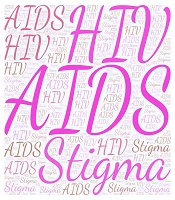Dear Editor,
HIV-related stigma and discrimination are very common, especially in developing countries as the main and most significant obstacle to providing HIV-related and non-HIV-related services to People Living with HIV (PLWH) (1). Stigma is also one of the most significant barriers to adherence to treatment that prevents patients from taking antiretroviral (ARV) drugs (2). In Iran, two projects have been conducted to assess the stigma index among PLWH. The Stigma Index 1 study was conducted in 2010 among 289 PLWH in six cities, and the results showed that about 62% of PLWH in the survey experienced external stigma, and about 99% of PLWH experienced internal stigma. This study was conducted with the help of peer groups, which indicated a high level of internal stigma, including feelings of shame, guilt, and humiliation (1).
Then, in 2020, about 10 years later, this study was repeated under the title HIV Stigma Index 2; this time, instead of six cities, eight cities were included in the study with sample size of 684 PLWH, so in addition to the previous six cities, two new cities were added to the survey. The HIV Stigma Index 2 study was conducted with the help of peer groups and under the supervision of the Global Network of People Living with HIV (GNP+). The noteworthy point in this study was that external stigma was reduced by about 50%, which of course, was not significant in comparison with the previous study which was 62%, but internal stigma, which included feelings of guilt, shame, and humiliation, was significantly reduced (3), which shows that 10 years of interventions, especially in the field of public education with the participation of the public and private sectors, including the crucial role of the media, newspapers, social activities of PLWH, voluntary counselling and testing (VCT) centers and positive clubs (PCs), have been very prominent. Therefore, with educational interventions, internal stigma can be reduced initially, which increases self-confidence and self-disclosure among PLWH.
In the case of external stigma, which is the level of stigma experienced by PLWH from society, more time is needed because changing society’s opinion about this disease requires more time, which is sometimes impossible. Still, the level of stigma can be reduced with appropriate and effective interventions, including long-term and repeated educations. In the Stigma Index 2 study, no significant difference was observed between the stigma experienced by PLWH about HIV-related and non-HIV-related services (3), which indicates that both HIV-related and non-HIV-related settings need HIV educations.
In conclusion, conducting HIV-related educations, especially among PLWH, can reduce stigma among these people themselves. While HIV-related education among the general population takes longer to be effective, discrimination can be reduced to zero with more supervision, while eliminating stigma may require decades or even centuries because stigma is inside the minds of people. Still, discrimination is the practical manifestation of stigma.
